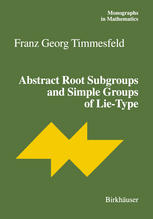

Most ebook files are in PDF format, so you can easily read them using various software such as Foxit Reader or directly on the Google Chrome browser.
Some ebook files are released by publishers in other formats such as .awz, .mobi, .epub, .fb2, etc. You may need to install specific software to read these formats on mobile/PC, such as Calibre.
Please read the tutorial at this link: https://ebookbell.com/faq
We offer FREE conversion to the popular formats you request; however, this may take some time. Therefore, right after payment, please email us, and we will try to provide the service as quickly as possible.
For some exceptional file formats or broken links (if any), please refrain from opening any disputes. Instead, email us first, and we will try to assist within a maximum of 6 hours.
EbookBell Team

0.0
0 reviewsIt was already in 1964 [Fis66] when B. Fischer raised the question: Which finite groups can be generated by a conjugacy class D of involutions, the product of any two of which has order 1, 2 or 37 Such a class D he called a class of 3-tmnspositions of G. This question is quite natural, since the class of transpositions of a symmetric group possesses this property. Namely the order of the product (ij)(kl) is 1, 2 or 3 according as {i,j} n {k,l} consists of 2,0 or 1 element. In fact, if I{i,j} n {k,I}1 = 1 and j = k, then (ij)(kl) is the 3-cycle (ijl). After the preliminary papers [Fis66] and [Fis64] he succeeded in [Fis71J, [Fis69] to classify all finite "nearly" simple groups generated by such a class of 3-transpositions, thereby discovering three new finite simple groups called M(22), M(23) and M(24). But even more important than his classification theorem was the fact that he originated a new method in the study of finite groups, which is called "internal geometric analysis" by D. Gorenstein in his book: Finite Simple Groups, an Introduction to their Classification. In fact D. Gorenstein writes that this method can be regarded as second in importance for the classification of finite simple groups only to the local group-theoretic analysis created by J. Thompson.